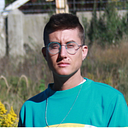Member-only story
The Asexual-Bisexual Mirror
Ace and Bi people are marginalized in many of the same ways.
TW: Sexual assault, sexual coercion
From 2004 to about 2008, I identified as asexual. I was out to friends and people I dated, and in many cases I was the first asexual person they had ever met. I experienced a lot of erasure, hostility, and ignorance when I wore that identity, yet most of it was un-nameable and therefore impossible to do much about. Since I didn’t know any other ace people, I didn’t realize how common my experiences were, and could not see them as part of a larger tapestry of aphobia.
Sometime around 2010, my identity changed. I experienced physical, sexual attraction to people of a variety of genders. I started wearing the label “bisexual”. In the years that followed, I experienced so much erasure, hostility, and ignorance that I frequently chose to take that label off. I only began to recognize my experiences as biphobia a few years ago, when I befriended other bisexual people and learned about their very similar experiences of being marginalized, doubted, and ignored.
When I take a step back, and look at my accumulated experiences of being marginalized, I can see that aphobia and biphobia are mirror images of one another. The biases I faced as an asexual person, and then a bisexual person, were…
